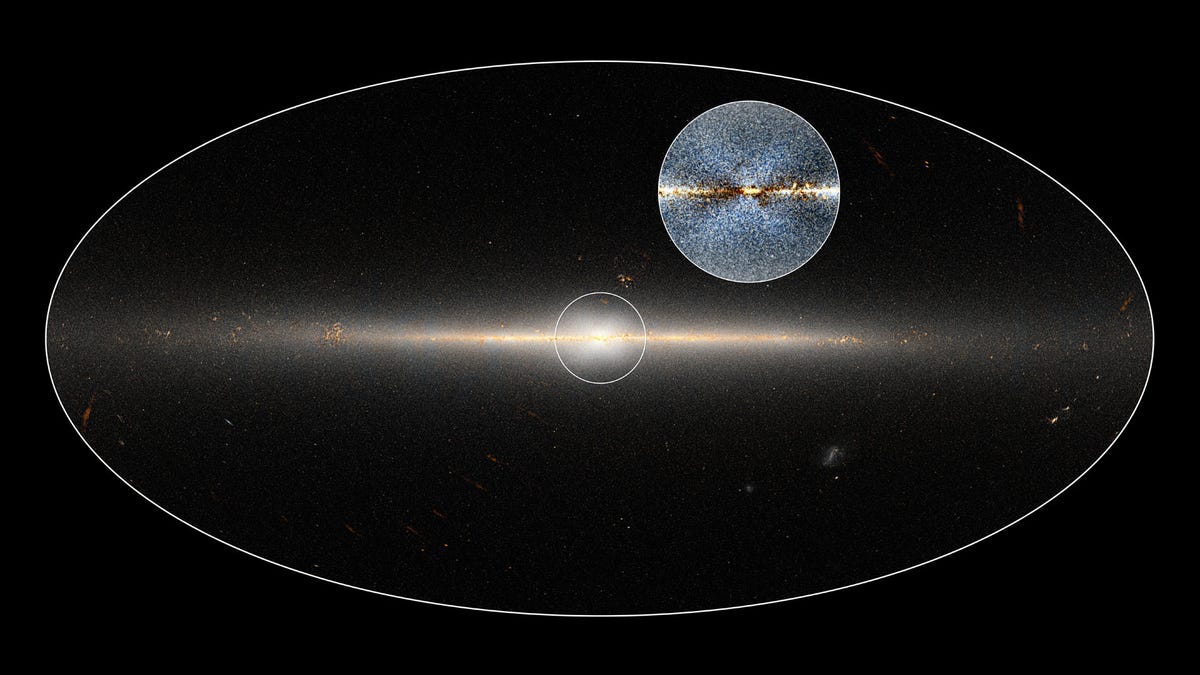
WISE all-sky image of Milky Way Galaxy. The circle is centred on the Galaxy’s central region. The inset shows an enhanced version of the same region that shows a clearer view of the X-shaped structure. (NASA/JPL-Caltech; D. Lang/Dunlap Institute)
A NASA space telescope and Twitter are two of the technologies that have enabled astronomers to observe a massive X-shape at the center of our galaxy, giving them new information about the structure and history of the Milky Way and other galaxies like it.
The space telescope was the Widefield Infrared Survey Explorer, or WISE, which after it was launched in 2009, took a multitude of infrared images of the stars. Dustin Lang, a researcher at the University of Toronto, was analyzing the star data from WISE, and posted some of it to Twitter. That caught the eye of a scientist in Germany, Melissa Ness, and together they collaborated on a new study analyzing the X-shape, which had been noticed in the past.
“There was controversy about whether the X-shaped structure existed,” Lang said in a statement. “But our paper gives a good view of the core of our own galaxy. I think it has provided pretty good evidence for the existence of the X-shaped structure.”
The vivid picture of the center of our galaxy, and the X-shape, suggests to the scientists that the Milky Way did not merge with any other galaxies in its past, which is one of the ways that astronomers think the Milky Way's central bulge could have been created in the first place.
“The bulge is a key signature of formation of the Milky Way Galaxy,” Ness, a researcher at the Max Planck Institute for Astronomy in Germany, and first author of the new study, said in the statement. “If we understand the bulge we will understand the key processes that have formed and shaped our galaxy.”
Our galaxy is so big that it is frequently measured in light years, which is the distance light travels in a year. The Milky Way is about 100,000 light years across, and the Earth is about 26,100 light years from its center.
The study, which refers to the X-shape as “self-evident and irrefutable,” was published in The Astronomical Journal.




















